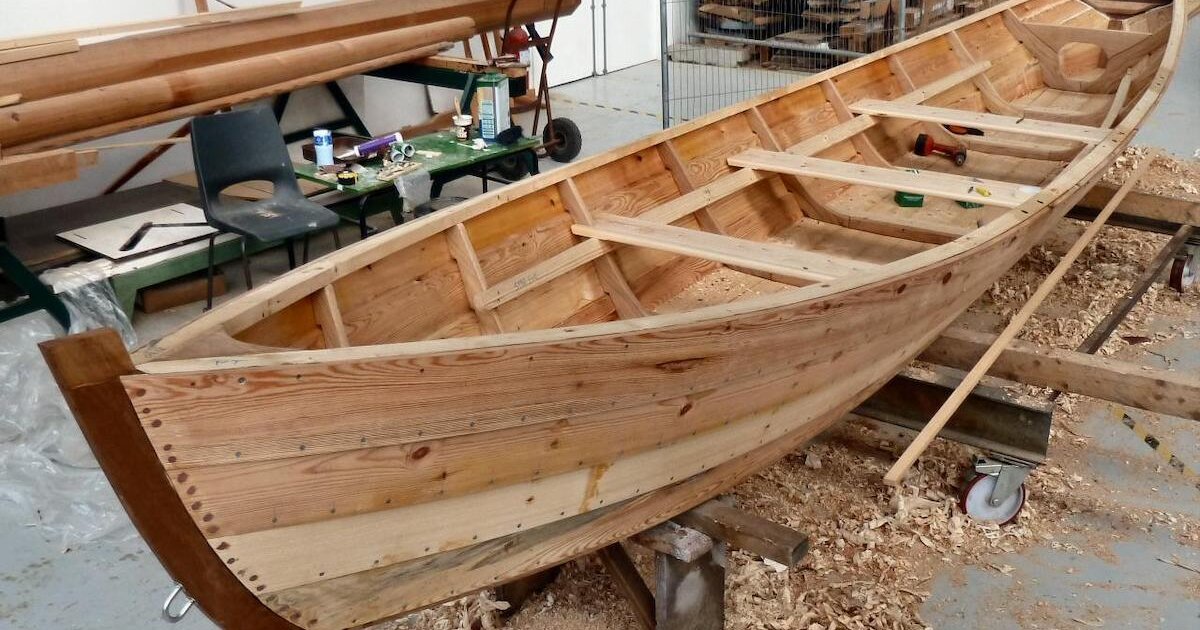
DIY Small Boat Construction: How to Bring Your Design to Life
Embarking on a DIY small boat construction project is a rewarding endeavor that combines technical skill, creativity, and a passion for the water. This comprehensive guide will walk you through the process, from initial design to the triumphant moment of launching your creation.
1. The Design Phase: Laying the Foundation
The design stage is paramount, setting the stage for the entire build. It's where your vision takes shape and technical considerations are addressed. Whether you're working from a pre-existing plan or crafting your own, key elements to consider include:
1.1 Boat Type and Purpose:
Determine the boat's intended purpose: rowing, sailing, fishing, or a combination. This will influence the hull shape, size, and features.
1.2 Size and Dimensions:
Choose the length, beam (width), and draft (depth) based on your needs and intended waters. Consider the space available for construction and the weight you'll be carrying.
1.3 Materials:
Select materials that align with your skills and budget. Options include wood (plywood, cedar, mahogany), fiberglass, aluminum, or even inflatable materials. Research their properties and suitability for your design.
1.4 Stability and Buoyancy:
Ensure your design incorporates adequate stability and buoyancy. Consider the boat's center of gravity and the displacement it needs to support the intended load. Refer to boat design software or consult with experienced boat builders.
1.5 Construction Techniques:
Choose construction methods compatible with your materials and skill level. Options include:
- Plank-on-frame: Traditional method using planks fastened to a frame.
- Plywood strip construction: Lightweight and robust, using thin strips of plywood glued and fastened together.
- Fiberglass over foam: Durable and lightweight, with a foam core covered in fiberglass.
- Inflatable: Lightweight and portable, using durable inflatable tubes and a fabric hull.
2. Building the Boat: Bringing the Design to Life
With the design finalized, it's time to transition from theoretical to tangible. The building phase requires meticulous attention to detail, patience, and a well-equipped workspace.
2.1 Tools and Equipment:
Gather essential tools for cutting, shaping, fastening, and finishing:
- Saw (circular, jigsaw, bandsaw)
- Power drill and assorted bits
- Sanding tools (belt sander, orbital sander)
- Clamps and vices
- Measuring tools (tape measure, ruler, protractor)
- Safety gear (eye protection, gloves, dust mask)
2.2 Setting Up Your Workspace:
Create a well-ventilated and spacious workspace with adequate lighting. Ensure flat surfaces for assembly and a system for storing materials and tools.
2.3 Building the Frame:
If your design includes a frame, construct it precisely following your plans. Use durable wood, joinery techniques, and proper fasteners for strength and longevity.
2.4 Planking or Skinning:
Attach the planks or skin (plywood strips, fiberglass, etc.) to the frame, carefully shaping and fastening them. Ensure tight joints and a smooth, watertight surface.
2.5 Interior Construction:
Add interior features such as seating, storage, or rigging according to your design. Use appropriate materials and construction methods to create a comfortable and functional space.
2.6 Finishing Touches:
Complete the finishing touches, including sanding, painting, varnishing, and adding hardware. Apply sealant or paint to protect the hull and enhance its appearance.
3. Launching and Enjoyment: Putting Your Creation to the Test
The culmination of your hard work is the moment of truth: launching your boat into the water. This is a thrilling experience, but it also requires careful preparation and attention to safety.
3.1 Pre-Launch Inspection:
Thoroughly inspect your boat before launching to ensure it's watertight, stable, and equipped with necessary safety gear. Check for any leaks, loose fittings, or missing equipment.
3.2 Launching Procedures:
Choose a suitable launch site with calm waters and adequate access. Use a launching cradle or boat ramp to safely lower your boat into the water.
3.3 Initial Trials and Adjustments:
Once launched, take it for a few initial trials to assess its performance and stability. Make any necessary adjustments or refinements before venturing out on longer trips.
3.4 Safety First:
Always prioritize safety when boating. Wear a life jacket, inform others of your boating plans, and be aware of weather conditions and water hazards.
4. Important Considerations:
Embarking on a DIY boat construction project is a journey of learning, creativity, and satisfaction. Here are a few additional factors to consider:
4.1 Seek Guidance:
Don't hesitate to seek guidance from experienced boat builders, join online forums, or attend boat building workshops. Learning from others can help you avoid common mistakes and enhance your skills.
4.2 Budget Planning:
Develop a realistic budget for your project, considering materials, tools, and any potential unforeseen expenses. Set aside funds for safety gear and ongoing maintenance.
4.3 Patience and Perseverance:
Boat building takes time and patience. Expect challenges and setbacks, but embrace the learning process and the sense of accomplishment when you see your vision take shape.
4.4 Environmental Responsibility:
Be mindful of environmental considerations throughout your project. Choose sustainable materials, dispose of waste responsibly, and learn about boating practices that minimize environmental impact.
Building your own small boat is a fulfilling endeavor that can lead to years of enjoyment on the water. By carefully planning, executing, and maintaining your creation, you can experience the pride and satisfaction of bringing your design to life and making lasting memories on the water.

0 comments:
Post a Comment
Note: Only a member of this blog may post a comment.